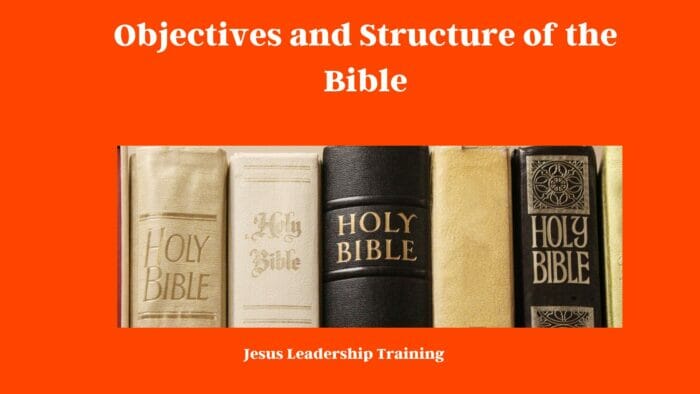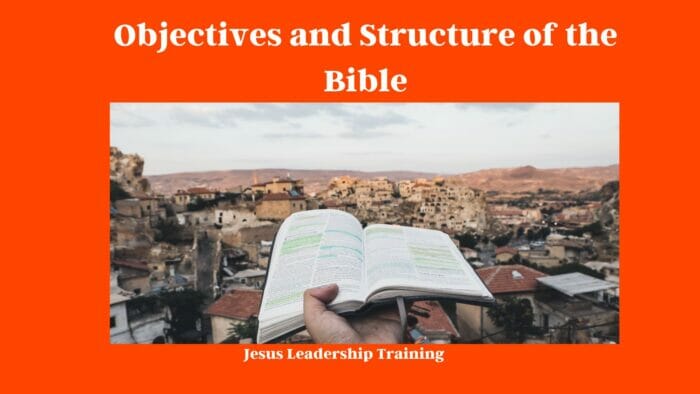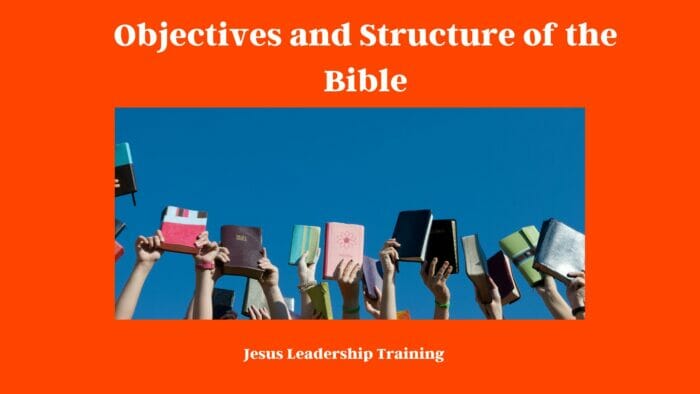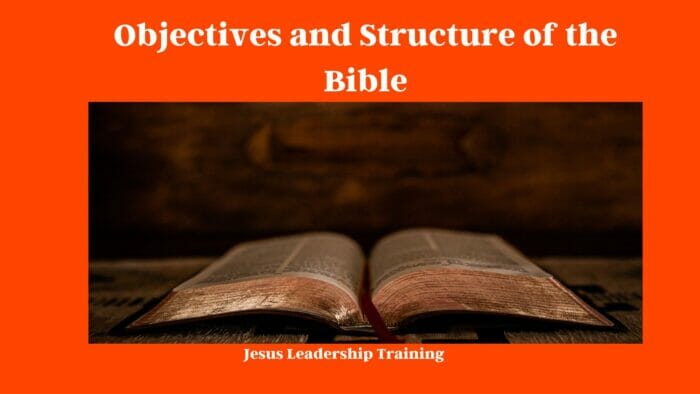Certainly, here are some bullet points explaining the structure of the Bible:
- Two Testaments: The Bible is divided into two main sections or testaments: the Old Testament and the New Testament.
- Old Testament: The Old Testament comprises the sacred scriptures of Judaism and is divided into several categories, including:
- Pentateuch: The first five books (Genesis, Exodus, Leviticus, Numbers, and Deuteronomy) that contain the foundational stories of the Hebrew people.
- Historical Books: Books like Joshua, Judges, Ruth, 1 and 2 Samuel, 1 and 2 Kings, and others that detail the history of the Hebrew people, including their conquest of Canaan and the rise and fall of various leaders.
- Wisdom Literature: Books like Proverbs, Ecclesiastes, and Job that offer wisdom, advice, and reflections on life.
- Prophets: Books containing the writings and prophecies of various prophets, including Isaiah, Jeremiah, Ezekiel, and the Minor Prophets.
- New Testament: The New Testament contains Christian scriptures and is divided into categories as well:
- Gospels: The first four books (Matthew, Mark, Luke, and John) that narrate the life, teachings, death, and resurrection of Jesus Christ.
- Acts of the Apostles: The book of Acts records the early history of the Christian Church and the missionary activities of the apostles.
- Epistles (Letters): A collection of letters written by apostles such as Paul, Peter, James, and John, addressing various theological, ethical, and practical matters within the early Christian communities.
- Revelation: The final book, often considered apocalyptic literature, containing visions and prophecies about the end times.
- Chapters and Verses: The books of the Bible are further divided into chapters and verses for easy reference. For example, “John 3:16” refers to the book of John, chapter 3, verse 16.
- Canonical Order: The books of the Bible are arranged in a specific order within each testament, but different Christian denominations may have variations in the order of certain books.
- Translations: The Bible exists in numerous translations and versions in various languages, making it accessible to a wide range of readers.
- Themes and Continuity: While the Bible’s structure may seem complex, it contains overarching themes such as God’s covenant with humanity, the story of salvation, and the central role of Jesus Christ in Christian theology.
Understanding the structure of the Bible can help readers navigate its content and gain a deeper understanding of its historical and theological significance.
Table of Contents
Structure of the Bible
The Bible, often referred to as the “Good Book,” is arguably the most influential book in human history. It is a diverse collection of texts with a complex structure and a wide range of objectives.
The Bible, a profound and revered text, is structured in a way that reflects its diverse content and the progression of God’s relationship with humanity over time. It is divided into two main sections: the Old Testament and the New Testament.
The Old Testament, also known as the Hebrew Bible, contains writings that are foundational to both Judaism and Christianity. It encompasses a wide array of literary genres, including historical narratives, poetry, prophecy, and wisdom literature.
The Old Testament can be further categorized into several sections: the Pentateuch, which consists of the first five books, known as the Torah; the historical books, recounting the history of the Hebrew people; the wisdom literature, offering practical advice and reflections on life; and the prophetic books, containing messages from the prophets. This section of the Bible serves as a historical record, a guide for ethical living, and a source of theological insight.
The New Testament, on the other hand, is distinctively Christian and revolves around the life, teachings, death, and resurrection of Jesus Christ. It begins with the four Gospels, which provide different perspectives on the life of Jesus. Acts of the Apostles follows, chronicling the early history of the Christian Church and the apostles’ missionary efforts.
The New Testament also includes the Epistles, a collection of letters written by apostles to various Christian communities, addressing theological, ethical, and practical issues. The final book, Revelation, is apocalyptic in nature and offers prophetic visions about the end times. The New Testament is seen as the fulfillment of the Old Testament and contains the core teachings of Christianity.
Both testaments are further divided into chapters and verses for ease of reference. While the Bible’s structure may appear complex, it is essential to understanding its profound message, which centers on themes of God’s love, redemption, and the reconciliation of humanity through faith in Jesus Christ. This unique structure allows readers to explore a rich tapestry of history, poetry, prophecy, and doctrine, providing spiritual guidance and inspiration for countless individuals throughout history.
Origin of the Bible
The Bible was written over a span of 1500 years, from approximately 1400 BC to AD 100, by more than 40 authors from various walks of life and different geographical locations.
The Old Testament
The first part of the Bible is the Old Testament, derived primarily from the Hebrew Bible.
Genesis
Creation Stories
Genesis, the first book of the Bible, begins with two distinct creation stories that depict God creating the universe and everything in it.

The Garden of Eden
It then introduces the Garden of Eden, Adam and Eve, and the concept of original sin.
Exodus
Israelites in Egypt
The book of Exodus tells the story of the Israelites’ enslavement in Egypt.
Moses and the Ten Commandments
It follows their liberation through Moses, who received the Ten Commandments from God.
Psalms and Proverbs
Books like Psalms and Proverbs offer poetic literature and wisdom teachings.
The New Testament
The New Testament is the second part of the Christian Bible, written after the life of Jesus Christ.
Gospels (Matthew, Mark, Luke, John)
Life and Teachings of Jesus
The four Gospels recount the life, death, and resurrection of Jesus Christ, providing the basis for the Christian faith.
Acts of the Apostles
Birth of the Christian Church
The book of Acts chronicles the formation of the early Christian Church after Jesus’s ascension.

Epistles and Revelation
These books consist of letters from early Christian leaders and a prophetic vision of the end times.
Themes in the Bible
God’s Relationship with Humans
Covenant
One major theme is God’s relationship with humans, particularly His covenant or promise of faithfulness.
Love, Forgiveness, and Salvation
Other themes include love, forgiveness, and salvation.
Interpretations of the Bible
Literal versus Symbolic Interpretations
There are different ways to interpret the Bible, with some viewing it as literal historical fact and others seeing it as symbolic or allegorical.

The Bible and Modern Society
The Bible’s Influence on Laws
The Bible has significantly influenced laws and ethics in societies around the world.
The Bible’s Influence on Culture
It has also shaped culture, including literature, art, and music.
Criticisms and Controversies
Alleged Contradictions in the Bible
Questions about Biblical Infallibility
There are ongoing debates about alleged contradictions within the Bible and questions about its infallibility.
Conclusion
In conclusion, the Bible is a complex text with diverse themes and interpretations. Its objective is not merely to tell a story, but to provide spiritual guidance, instill moral values, and cultivate a relationship between God and humanity.
FAQs
- Who are the authors of the Bible?
- The Bible was written by over 40 different authors, including prophets, kings, and disciples.
- What are the main sections of the Bible?
- The main sections of the Bible are the Old Testament and the New Testament.
- What are some major themes in the Bible?
- Major themes include God’s covenant with humanity, love, forgiveness, and salvation.
- How is the Bible interpreted?
- The Bible can be interpreted literally, symbolically, or a combination of both, depending on one’s belief system.
- How has the Bible influenced society?
- The Bible has had a profound influence on laws, ethics, culture, and even literature and arts worldwide.
Best Bible Encyclopedias and Dictionaries
Below is a table featuring some highly regarded Bible Encyclopedias and Dictionaries along with their publishers and websites where they can be found or purchased.
| Title | Publisher | Website |
|---|---|---|
| The International Standard Bible Encyclopedia | Eerdmans | Eerdmans |
| Zondervan’s Pictorial Bible Dictionary | Zondervan | Zondervan |
| Easton’s Bible Dictionary | Thomas Nelson | Thomas Nelson |
| Holman Illustrated Bible Dictionary | B&H Publishing Group | B&H Publishing Group |
| The New Unger’s Bible Dictionary | Moody Publishers | Moody Publishers |
| HarperCollins Bible Dictionary | HarperOne | HarperOne |
| Vine’s Complete Expository Dictionary of Old and New Testament Words | Thomas Nelson | Thomas Nelson |
You can generally find these resources on the publishers’ websites, as well as other online book retailers such as Amazon or Christianbook. It’s always good practice to confirm availability and review additional details on the specific websites or other reliable online bookstores.




